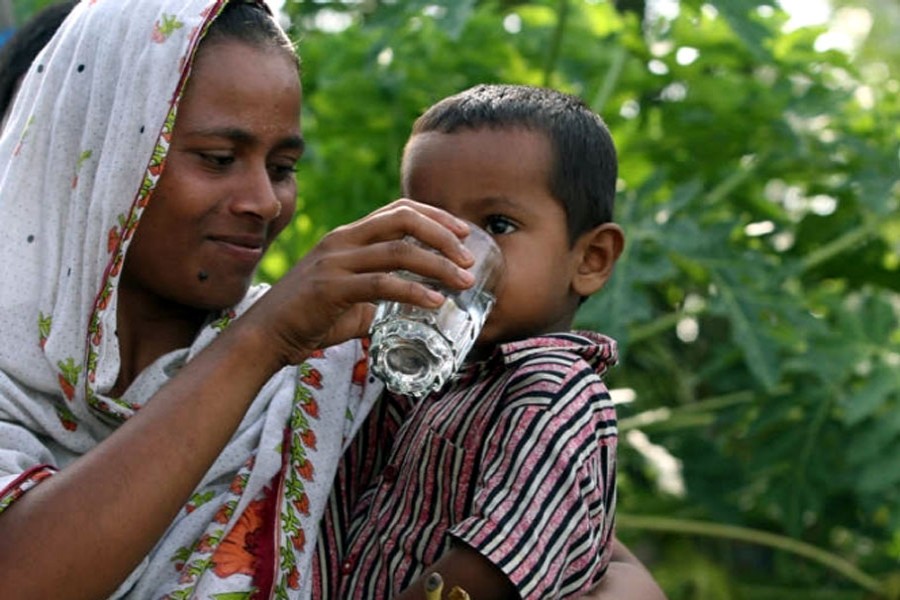
Published :
Updated :

Amid a plethora of public health issues plaguing the country's both urban and rural areas, a few hardly come under wide focus. They have been besetting public life in increased ferocity since long, but few people appear to be bothered with them. One of the most dreadful of these menaces is the widespread crisis of safe drinking water. When it comes to safe drinking water and food, many would like to consign Dhaka to the bottom level of a list. The ongoing dengue outbreak apparently involves 'clean water' mixed with the dreadful vector or larvae of the mosquito called Aedes. Almost in the same way, the clean water people are used to drinking outside home or workplace remains in most cases filled with bacteria --- thepathogens of myriad water-borne diseases. The apparently clean or transparent water might turn out to be highly deceptive. These drinking water-related cases these days are commonplace. During the hot and humid summer days in Dhaka and other cities, drinking glasses of raw 'sherbets' prepared with ice-mixed water at roadside is a common spectacle. Few bother to think if these soft drinks are safe to drink.
According to numerous surveys, almost all the mid- or lower level restaurants serve bottled drinking water taken straight from tap. However, they also serve sealed water bottles on request, for which the 'customers' may have to pay extra charges. Drinking water after boiling it for a specific time at home should be the hygienic practice. Allegedly, a number of households do not boil their water for the specific length of time. Thanks to the unabatedly rising domestic gas tariff, many fixed-income families skip the mandatory boiling of water. Stomach upsets, mild to severe intestinal cramps continually plague these families. For skipping regular boiling of water, many cite the dominant reason of gas price hike. Water purifiers are a pipedream to the lower-middle class. These families are normally among those badly affected by the scarcity of safe water.
Upon taking the capital's drinking water situation into view, many would feel like singling out the seasons of summer and monsoon as the worst ones. In many areas in old Dhaka, and a few zones in other parts, summer witnesses paucity of drinking water as a seasonal woe. Most of the water taps remain dry throughout the summer. The disadvantaged people are made to depend on the mobile water tanks operated by WASA (Water Supply and Sewerage Authority). But these tanks at times prove too insufficient to serve all people queuing for water. In many areas, heated melees around public taps are a common spectacle. As the Dhaka WASA authorities put it repeatedly, the ground water level is dropping fast in the city. According to experts, the water depletion is caused mainly by the reckless urbanisation, i.e. construction of high-rise buildings in all parts of the capital. As the settlements spread to all directions of the capital, the drop in water level gains speed thanks to pumping.
During monsoon, a large volume of the water supply fall victim to the scourge of water-logging. Thanks to their being submerged in the monsoon rain water for a long period of time, the water-carrying pipes allegedly develop cracks. This enhances the risks of the supply water's contamination in the city of Dhaka. Apart from the supply pipes' aging process, the authorities' regular inspection and maintenance of the various types of water lines appear to have developed a sloth. It adds to the miseries of the city residents, long afflicted by the many-faceted crises related to water supply.In spite of all these hurdles, growing public awareness of potable water is the key to the weathering of all crises.


 For all latest news, follow The Financial Express Google News channel.
For all latest news, follow The Financial Express Google News channel.